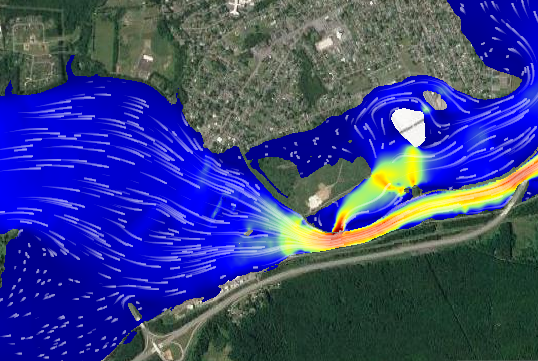

The following dialog allows for selection of tables to be created. A small reach of the Wabash River in Tippecanoe County, Indiana is created using the RAS Mapper in HEC-RAS. Students are expected to have a basic understanding of hydraulics, open channel flow and GIS functions.

Users create new tables using Database -> Create River Database Tables or tool. Introduction The objective of this exercise is learn the basic functions of RAS Mapper in HEC-RAS to create a 1D model of a river system. There are three tables always required for a model creation: river lines, cross-sections and flow paths. If a table needs a user specified attribute, it is given in the User defined attributes column. The table below lists river database tables created by RiverGIS. There is a table for river lines, cross-sections etc. Model geometry data are stored in a river database tables. When a schema is created from outside the RiverGIS use the Database > Refresh Connections List or the tool. If a connection or schema was created in a previous session, it can be chosen from the DB Connection or Schema dropdown lists. RiverGIS will automatically switch to the newly created schema, as shown below. Users can create a schema in a number of ways: using pgAdmin, QGIS’ own DB Manager or from within RiverGIS dialog by choosing Database > Create New Schema or clicking tool icon from Database toolbar. Therefore, the first step is to create a new schema for a model. Each model goes to its own schema, a kind of database directory for data grouping.

Until a database and schema are set in RiverGIS window, most of the tools are inactive.Ī single PostgreSQL database can be used to store many models geometries. A term river database refers to a database used by RiverGIS. HEC-RAS Reference DocumentsĪdditional HEC-RAS reference documents cover a variety of topics including validation and verification, guidance for specific applications, and computer performance insight.A fundamental difference from HEC-GeoRAS is that the RiverGIS uses a PostgreSQL database with PostGIS spatial extension for data storage (see Requirements for installation instructions). The tutorials also provide an example datasets that allows a user to work through the tutorial. The HEC-RAS Guides and Tutorials provide step-by-step instructions for performing common tasks in HEC-RAS.

HEC-RAS Training page provides links to training materials including videos from lectures and webinars, and workshop material from training classes. The HEC-RAS Release Notes document changes made to each new version of the software including problems repaired, and new features. This documentation can also be accessed through the Hehlp menu in HEC-RAS. The home page contains User's Manuals, Hydraulic References, Application Guides and more covering topics in 1D, 2DĪnd sediment hydraulics. The HEC-RAS Documentation Home Page is the most comprehensive source of documentation on HEC-RAS.


 0 kommentar(er)
0 kommentar(er)
